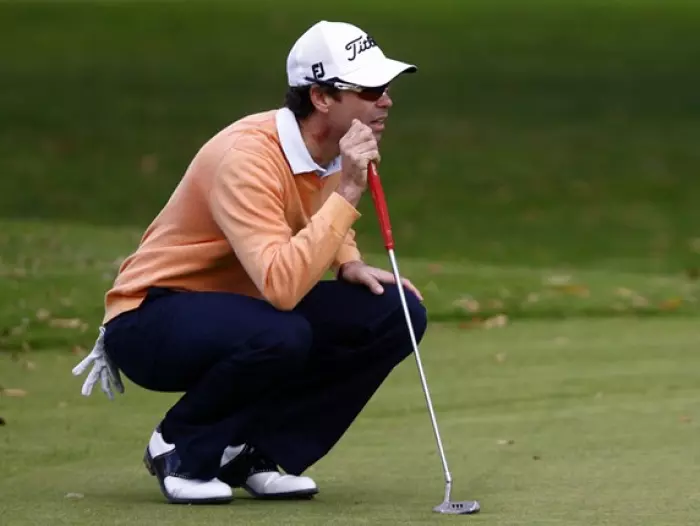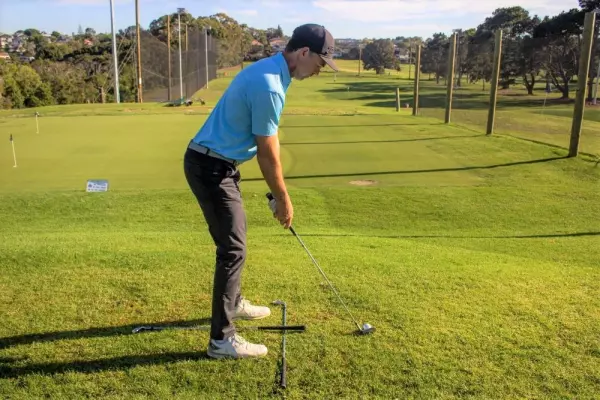Putting is a part of golf that is guaranteed to create plenty of highs and lows. You can be brilliant one day and feeling bulletproof, then the next day be reduced to feeling like a rookie as you approach holes that seem to be the size of a thimble. Sound familiar?
Putting can sometimes make up more than 40% of a player’s score over 18 holes of golf, which explains why all the world’s success-obsessed golfers put so much emphasis on getting it right.
To set you up for more good days on the green, let’s start with some basic facts.
There are three parts to putting and three different skills you need to learn.
How to read the green surface
You must learn to judge the pace of the greens by assessing what effect the slope will have on the ball, whether it's sidehill, uphill, downhill or a combination of all three. The surface type and grain of the grass also play a factor, as do conditions such as wind, rain or dew on the greens.
How to start the ball on the line
Every putt is straight until the green surface uses gravity to pull the ball somewhere else, so you need to look at alignment and the putting mechanics of your stroke.
How to control the speed of the putt
This involves developing fine skills with your hands and shoulders to control the good mechanics you have. Some putts are 20m long and for these, accomplished golfers employ a very different length of stroke and speed than they’d use for a 1m putt.
One thing I want all my players to know about putting is where their expectations should sit. This has a massive effect on their physiology over the putt. When they are at ease and just hit the putt the best they can, there is a higher probability of seeing the ball sink into the hole because their natural talent will come through. A relaxed, assertive muscle will always react better than a nervous muscle full of tension. We usually bring the nervous stuff on when we don't want to mess it up, or we are playing for something that matters. Hopefully not your child’s education money!
Interestingly, the stats and averages of PGA tour players are not what people think. The best players in the world sink the ball only 50% of the time when they putt from 2.5m (8ft) out. Many beginners and even mid-teen-handicap players I talk to expect to make such putts all the time, but this is unrealistic. The PGA tour players succeed with around 65% of putts from 2m (6ft) but their success rate rockets to 95% when the putt is 1.2m (4ft).
It’s a great thing to know these stats because they should change your attitude to the pace of your putt from these distances. Absolutely try to sink putts of these lengths, but don't get aggressive, thinking you should make them every time, and instead find yourself knocking the ball four feet past the hole.
This week, I want to show you a good set-up, focusing on your posture. The putter needs to be operated with the arms swinging from the shoulders, so the shoulders, chest and back act as the engine room. The head and legs should stay very still in putting. The wrists should not flap around; in fact, they should also be locked in. If the wrists start to move, instantly the clubface is affected. This will cause the ball to change direction from impact.
So, if you get over the ball and don't have your posture sorted and your balance correct, you will get your wrists working incorrectly, I can guarantee that.

Look at these photos and notice:
1. Balance in the feet.
2. Straight and strong back at address, so the back is bent over from the waist and allows enough room for the arms to swing under your shoulders.
3. Eyes are 0-8cm over the ball line. If your eyes sit over the ball, you are looking down your target line and can see the line of your putt. (Imagine shooting a rifle from 30cm to the left of the barrel – you wouldn’t do it!) The ball position should be under your lead eye (the left eye for a right-handed golfer).
Check yourself by using your phone or looking at a reflection. Some people will be shocked at what “comfortable” looks like. Most players I see are too upright and have no room for their arms to operate correctly.
Now you have a chance to develop your good mechanics in your putting.
Stay tuned for next month's insights into building a golfer!
Read more from Marcus at impactgolf.co.nz and marcuswheelhouse.com












